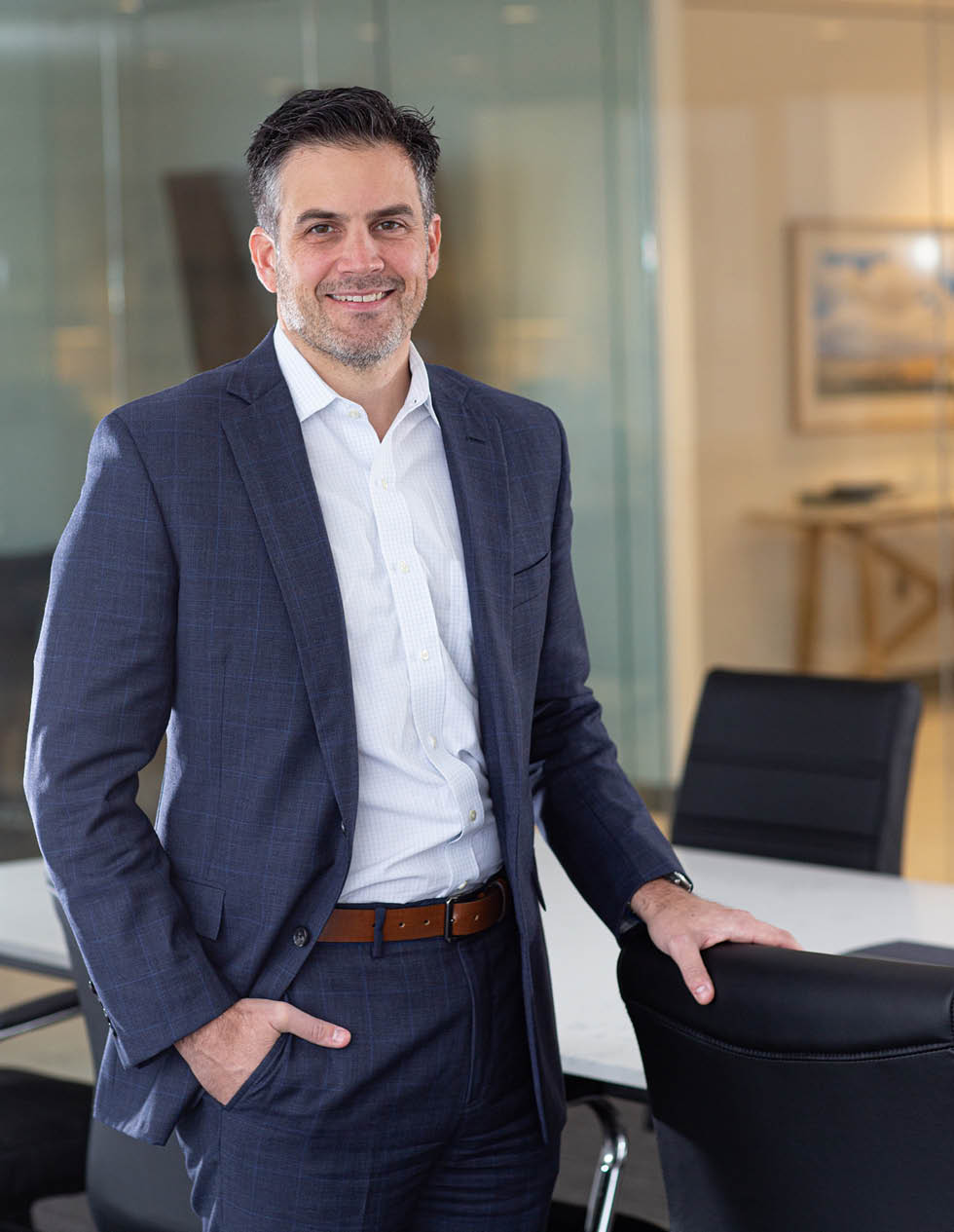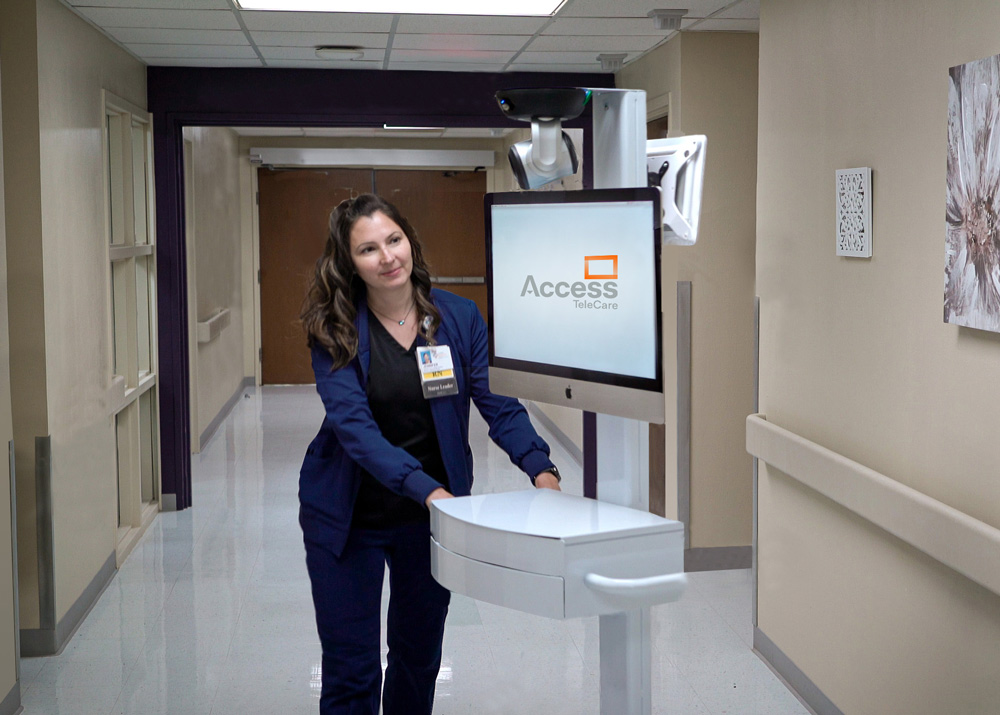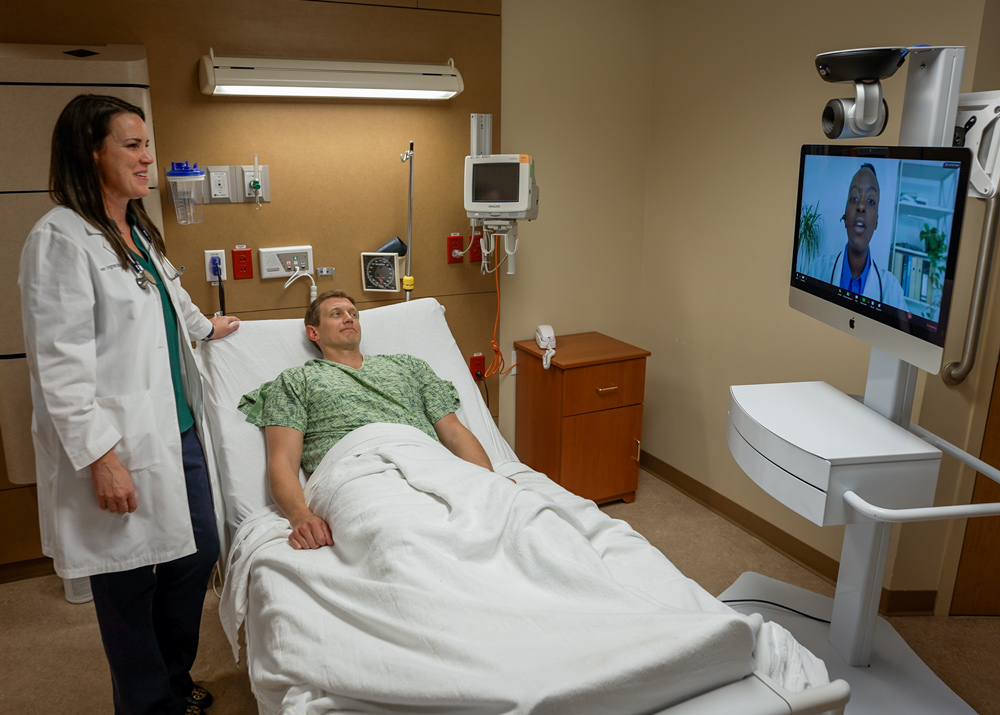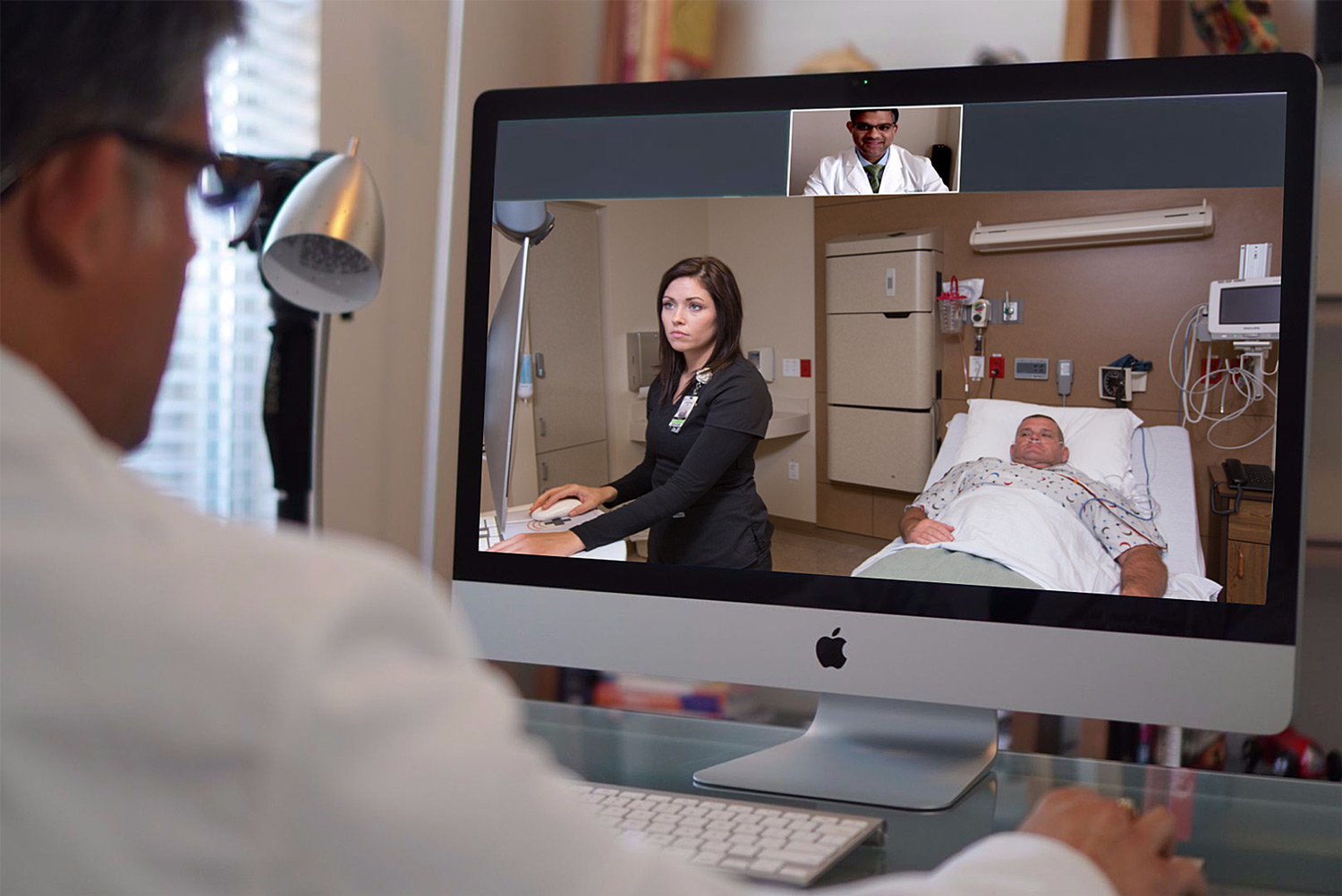
Chris Gallagher, MD, (Medicine ‘05) at Access TeleCare headquarters located in Dallas, Texas.
You’ll Need This One Day
Making rounds with Christopher Blewett, MD, in fall 2003, Gallagher witnessed the immediate relief he provided to an Alpine, Texas, family whose newborn had an abdominal wall defect. The uncommon condition stumped the local practitioner, who reached out to Blewett, a pediatric surgeon at TTUHSC. The family’s fear of the unknown was quickly put at ease by the telemedicine visit with Blewett that addressed the diagnosis, level of urgency and the infant’s prognosis.
Gallagher calls this the power of telemedicine – access. Watching the calm wash over this family through the ability to talk to a specialist, that they otherwise wouldn’t have been able to do, is something he never forgot. “You have these moments in training where they just stick with you,” he said.
Fast forward 10 years, Monday to Friday, Gallagher is an academic cardiac electrophysiology fellow at UT Southwestern in Dallas, Texas. On the weekends, he is a moonlighting hospitalist in the rural East Texas 96-bed facility of Hopkins County Memorial Hospital in Sulphur Springs, Texas (now known as CHRISTUS Mother Frances Hospital – Sulphur Springs). For an entire year, every weekend Gallagher lived in a hospital room and ate cafeteria food — and looked forward to being there.
CEO, Access TeleCare
Within a few months, the hospital’s challenge of not being able to keep and treat their critical patients locally became evident. They needed to build an ICU program that would alleviate this issue. After a long year of trying to recruit one pulmonary critical care physician — with no luck — Gallagher realized the approach needed to change.
Recalling the telemedicine visit with Blewett 10 years prior, Gallagher asked the hospital board to let him take a risk.
The hospital was transferring out 20-plus patients a month they could manage locally with access to specialists via telemedicine. With a forward-thinking mindset, Gallagher created Access Physicians in the fall of 2013, and a rural hospital serving a population more than 15,000 unknowingly established Texas’ first 100% virtual ICU.


It’s a form of medicine that Gallagher calls a team sport. Access Physicians had a mission to fill the gaps in health care to the communities who would otherwise not receive it. It’s a model he continued to build on after stepping away from the hospital where he originally started it.
The tides began to turn for Access Physicians when the pandemic hit, and before the end of 2020, the company received multiple inquiries about an acquisition but one in particular stood out – SOC Telemed. In an article with D Magazine, Gallagher calls them an inspiration and the one they’ve been chasing.
SOC Telemed acquired Access Physicians for $194 million and after five months, Gallagher assumed the CEO role for the nation’s largest provider of acute care telemedicine. They’ve since rebranded as Access TeleCare, truly embodying Gallagher’s philosophy of the power of telemedicine– access.
“That access is for patients to have access to the providers they need when they need it. And that access is timely. Patients need urgent care when their condition demands it, not when it’s available,” he said.
“It’s access for hospitals. To really work at their fullest capabilities, they need to have a diversity of specialists on their medical staff to handle whatever comes through the door.”

A remote physician in his office meets a patient with the help of in-person staff at a partnered facility.
Hendrick Medical Center in Abilene, Texas, an Access TeleCare partner, has struggled to recruit specialists in maternal-fetal medicine, Jacqueline Zimmerman, DO, an obstetrician at Hendrick Medical Center said. Their out-patient support was good but in-patient was lacking services needed for their high-risk patients.
Through Access TeleCare, the patients and physicians now have 24-hour access to maternal-fetal specialists that are only a quick phone call away. As a physician herself, Zimmerman feels supported in the care she can provide with help from the Access TeleCare program, which she calls an asset and is thankful for.
“We really didn’t feel like we had any good alternatives until they came along. So, it’s improved our quality of care, and we’re really happy with it,” she said.
For Gallagher, it’s rewarding to serve the rural communities and “really see the good and the help you can bring to the patients.” Knowing he has done this to an even further extent develops a degree of pride, but he’s also thankful for the cooperation and collaboration that made it happen with the “orchestra of health care professionals” behind it.
The book on telemedicine is still being written, he says, every day they look for new ways to be more efficient and “push what is possible.”
About Access Telecare
HOW IT IS DONE
The cart is equipped with diagnostic tools, much like those your physician would use in-person, such as a stethoscope. The images and live monitoring conducted in-person by a health care provider via these tools are visible to the telemedicine physician treating the patient. Chris Gallagher, MD, (Medicine ‘05) CEO of Access TeleCare, says the company makes the process uncomplicated with training.
On-site nurses facilitate the process and remain with the patient throughout the physician encounter. The remote physician has complete control over the cart’s functions and manages the exam.
Gallagher says, “For telemedicine to work, it has to be intuitive,” and that is why providers at each partner facility are trained on the proper use of the cart in a six-week orientation.
Access TeleCare’s core service lines
Hospitalists
Infectious disease
Neurology
Psychiatry
Pulmonary and critical care
Maternal-fetal medicine
Cardiac arrest (code blue)